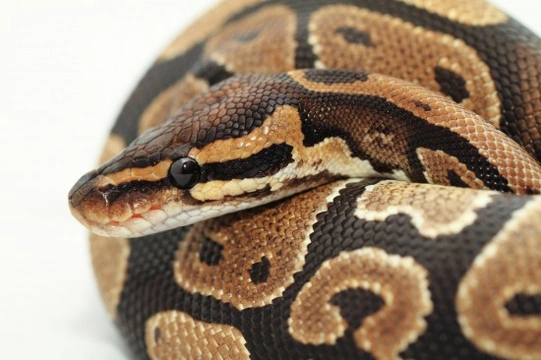
Retained Eye Caps in Snakes Explained
Snakes are fascinating creatures that need to be kept in clean environments where the humidity levels are just right for them. Should the humidity be inadequate, it can lead to all sorts of health issues including a condition called retained eye caps. This is typically a condition that's associated with shedding problems but what are retained eye caps and can it be treated?
Snakes and other reptiles don't have eyelids but they do have scales which are specially adapted to go over their eyes which are called "eye caps" – sometimes they are referred to as spectacles. When your snake sheds, these eye caps are shed along with their skin. However, all too often if a snake does not manage to shed properly, their eye caps remain in place which is the condition known as "retained eye caps".
What Causes Retained Eye Caps?
The condition is typically caused by a snake's environment not having the correct levels of humidity. However, there may be other contributing factors which may well include the lack of good husbandry. Very often, if there is an infestation of mites or some sort of infection in the eye or the tissue around it, these too may well be contributing factors as to why the eye caps don't shed along with the rest of your pet's skin.
Establishing Whether Your Snake is Suffering with Retained Eye Caps
When your snake starts shedding it's really important to keep a close eye on the progress of the shed. If all goes well, their eye caps will shed at the same time as their skin. When you look at the shed skin there shouldn't be any holes in it where they eyes used to be. However, if there are holes in the shed skin, it is always worth checking they didn't fall away separately. If you can't find them, you then have to take a close look at your pet's eyes to see whether the caps are still there or not.
A healthy snake has clear eyes with the exception of when they are just about to shed. This is when their eyes turn a milky blue colour for a very short period of time so their eyes might seem a little cloudy or foggy which is perfectly normal. It is pretty hard to tell whether or not a snake has retained eye caps which is why it's really important to consult your vet who would be able to expertly check this for you before deciding what to do about it.
Should Retained Eye Caps be Removed?
Some people who keep snakes believe it is better to leave retained eye caps alone and that they will come off during the next shed. However, there is mixed feeling about this with other people taking the stance that it is better to have them removed by a vet. This is because if the condition is not treated it could well cause a lot of damage to a snake's eyes which means they then have impaired vision. Should this happen, snakes very often become nervous, they could become aggressive or not want to feed which results in them losing a lot of condition.
It goes without saying that prevention is better than cure, so if your snake suffers from retained eye caps after a shed, you may well want to take a close look at their environment and then make any changes needed paying particular attention to humidity levels and your snake's diet.
Should You Remove Retained Eye Caps Yourself?
You should never try to remove retained eye caps yourself. It is absolutely necessary for this to be done by a qualified vet because you could end up causing irreparable damage to your pet's eyes. One thing you can do is to soak your snake in lukewarm water making sure you use a shallow container so your pet doesn't run the risk of drowning. You should never leave your snake unsupervised when they are soaking for this reason.
Soaking your snake in warm water may help the eye caps shed but you may have to repeat the process several times. If after a day or so, there is no change then a quick trip to the vet would be in order so they can appraise your pet's condition and remove the retained eye caps if they feel this is necessary without causing any damage to the snake's eyes.
Conclusion
Keeping snakes as pets has become really popular because they are such fascinating creatures. If you're thinking about getting a snake, you would need to do a lot of research before you decide which species to get, bearing in mind that some snakes are a lot easier to look after than others and that some get very, very big whereas others stay pretty small. You would need to read up on how they live in their natural habitats and then carry out the necessary research so you create the right type of environment for them to live in paying particular attention to the sort of humidity levels. Lastly, you need to make sure that everyone in the household is happy about having a pet snake around because some people are quite frightened of them.



